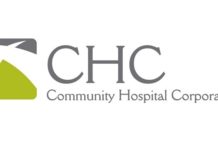Under-resourcing in Australian public hospitals has resulted in compromised care, with delayed diagnosis in surgery, inadequate treatment and psychological and social disruption related to often indiscriminate cancellation of surgery lists and patients. Public hospitals have been an important part of the Australian healthcare system since Federation and, in more recent years since the introduction of universal health insurance have been involved in both preventative health initiatives, community care, delivery of hospital acute services, education and training of health professionals and research. All of these activities represent fundamental ingredients of a healthy and developing system and must be equally supported if significant distortions are not to occur or service is to be compromised.
The Problem
The difficulty facing the Western world, however, is one of an ageing population linked to the increasing number of inhabitants within, certainly, Australia. This increasing age of the population carries with it substantial changes in not only the nature of healthcare that needs to be provided but also the incidence with which healthcare is being sought 1. In order to meet this challenge, appropriate training needs to be in place and, in the case of surgery, an adequate exposure to clinical conditions, operative time and an appropriate mix of cases needs to be made available. This, unfortunately, has not been possible in many public hospital environments due to the need to manage only the most urgent cases with the more elective patients often failing ever to receive surgery. Strategies to deal with this are being developed and have largely involved utilising the private healthcare system, which is responsible for in excess of 55% of the surgical procedures performed within Australia at this time. In order to manage the burgeoning demand for public hospital services, rationing has been occurring within the sector. Unfortunately politicians are reluctant to inform the public that such rationing is necessary and temporary freezes, adjustments to waiting lists and restriction of surgical time have been the primitive and blunt instruments used to control demand. This has led to inefficient use of substantial capital resources and a significant increase in bureaucratic positions aimed to justify the diminishing return from the public hospital enterprise. This has substantial clinical implications for the patients being treated within such a system. Because of delays to be seen in clinics and assessed, often diagnoses are made at a later date than is desirable. With the demand on investigative resources such as colonoscopies, endoscopies and imaging, the time to achieve diagnosis is further drawn out. The trauma, both psychological and in the ensuing surgical intervention, is increased for the patient and the surgeon and the system is forced to manage more advanced disease than it would otherwise wish. This situation needs a major refocus of the enterprise so that it becomes disease and patient focussed rather than attempting to maintain an outmoded public service structure in a highly dynamic and changing environment.
Much of the problem stems from an increasing disengagement of clinicians from the management decisions. Clinicians are used as service deliverers and their input into the structure of the service, the management of it and the appropriate development of new technological developments are largely ignored. In Australia, this difficulty is further exacerbated by the almost unworkable situation of the funding model. Australian taxpayers’ money is collected by the Federal Government, however the Federal Government passes the required funds for the public hospitals on to the State Governments. How these funds are expended is open to manipulation and abuse, leading to non-uniform services across the country 2. To further compound the confusion, attendances to general practitioners are, in part, funded by the Federal Government through the Medicare system. This creates at a local level a tendency to cost shift from the States to the Commonwealth wherever possible, with the Commonwealth constantly trying to limit this activity. The time, effort and expense in managing this cost shifting exercise could be far better deployed into the provision of healthcare rather than more bureaucratic positions.
It is a source of constant bewilderment that within the health system surgeons are mainly complaining about their inability to deliver the service they require. Most of the surgical community would wish to do more operating, see more patients and teach more doctors if the opportunity was made available to them. Instead of applauding this energy and enthusiasm, the efforts of Government and local jurisdictions seem preoccupied with frustrating, discouraging and alienating the surgeons who could, indeed, be part of one of the most dynamic health systems in the world.
Because Australia has a dual public and private health system, with over 50% of the population being treated surgically within a private environment, the option for many practitioners is to disengage from the public health system and focus more on their private practice. This is not only motivated by financial considerations but also the autonomy and ability to control standards, care patterns and ensure that patients are treated in a timely fashion.
Solution
The healthcare system is a complicated structure and simple solutions are difficult to deliver. The most productive way forward would be to encourage a culture of teaching, research and service which are equally well supported. This brings with it many benefits in not only providing an environment which is attractive to surgeons and other clinicians in which to work but also enables the profession to be at the forefront of new developments in an environment of evidence based assessment and a culture of critical appraisal. Clinicians need to be encouraged to take leadership roles by providing protected time and funded opportunities to participate in leading their clinical colleagues in the current environment of rapid change and new technologies.
Gaining clinician input into such a bureaucracy is complex and requires a flexible approach by existing health authorities. Scheduling important meetings in the middle of operating lists is unlikely to gain much clinical input and there needs to be an increased appreciation that clinicians need well focussed outcome-directed interactions which are not merely “talk fests” designed to appear to have consulted without actually acting on the advice. Clinicians must also accept that the resources for the provision of healthcare are limited and if the current trend in consumption of gross national product in healthcare continues an unsustainable situation will develop 2. There is good evidence that countries that spend a high percentage of their gross national product on healthcare fail to deliver a better standard of care when assessed in terms of infant mortality, length of life and satisfaction with the healthcare system 1,3. Surgeons have, however, been major players in developing innovative approaches to healthcare. Day of surgery admissions are now in excess of 80% in many centres, day surgery has become an accepted part of the healthcare system and participation in audits of quality, such as the mortality audit administered by the Royal Australasian College of Surgeons and funded by State Governments, is a positive illustration of the type of collaboration that can be developed between clinicians and Government 4. New models for the provision of emergency cover across the health system, service to rural areas, particularly those remotely located, and greater integration between the country, city and academic organisations needs to occur. Unfortunately, within the healthcare sector manpower, predictions have been notoriously inaccurate 5. Government has, in the past, restricted the number of medical school places in the mistaken belief that the medical workforce would continue to be made up of predominantly male doctors prepared to work in excess of 80 hours a week. This has not occurred.
With the feminisation of the medical workforce and a more life-style orientated working hours for many of the more recently graduated medical staff, the response has been to dramatically increase the number of medical school places with almost no regard to how these individuals will be trained, both academically and in an appropriate clinical environment 6. These types of half-thought-through knee jerk reactions have typified much of the healthcare planning within Australia in recent years. Ways to rejuvenate, in particular, academic surgery, use the private as well as the public infrastructure more cleverly to deliver teaching, look at training through achievement of competencies rather than time, all need rapid evaluation and implementation if these new medical graduates are to have the type of training that their teachers have enjoyed 7. However, the solution will need to go further than just training more doctors. There needs to be an overhaul of the way in which, particularly in the public sector, healthcare is delivered. A greater use of focussed and highly trained physician assistants, who have a range of academic backgrounds and who have appropriate delegated activities from their surgical leaders, will be one way in which not only protocols can be more closely adhered to but also skill levels can be maintained and more focussed teaching can be delivered by engineering jobs where training for doctors is the principal role and delivery of service is moved to such individuals as physician assistants.
Conclusion
Within the Australian healthcare system, adequate funding does exist for a high quality healthcare. What is required is more focus on the patient and less on the bureaucratic infrastructures attempting to justify the inefficiencies and waste within the system. Surgeons, in particular, must return to meaningful discussion and debate with Government as to how this can be achieved but Government, for its part, must take a long-term view of the healthcare of the nation and become less pre-occupied with the short?term electoral imperatives which have largely dominated discussions in recent years. There is a recognition finally within both State and Federal Government that the current situation cannot continue. The solutions, however, seem to be elusive and will require focussed and unified approaches from clinicians, management and Government if we are not to see more money being poured into a system that has forgotten the patient as the central figure.






















